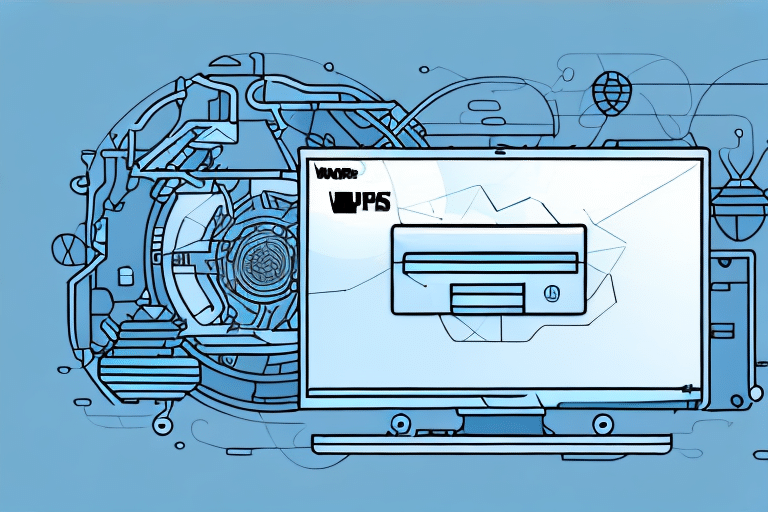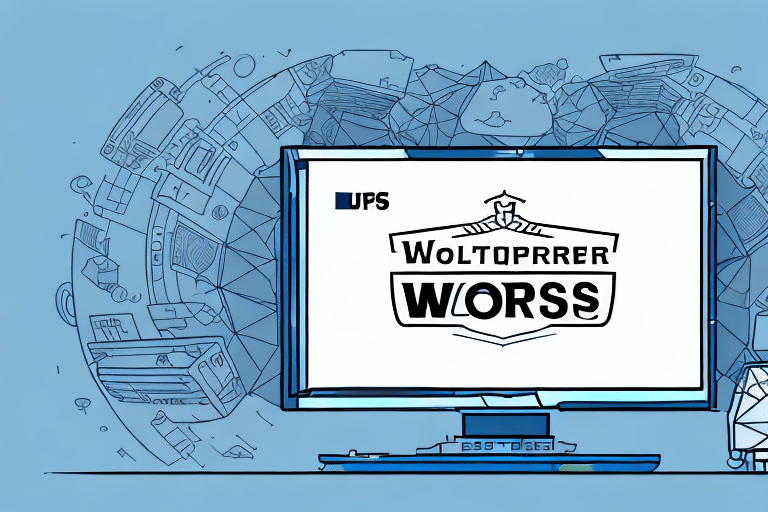The global e-commerce industry is booming, with more consumers choosing to shop online for everything from groceries to luxury goods. In particular, the sale of books, both physical and in digital format, has steadily increased in recent years, with revenue surpassing $26 billion in the US alone in 2019. With the rise of book and e-book e-commerce, it’s becoming increasingly essential for companies to streamline their warehouse management processes to meet growing demand and remain competitive. This article will explore the top 10 warehouse automation solutions for books and e-books e-commerce, highlighting the benefits, challenges, and costs associated with each solution.
Introduction to Warehouse Automation Solutions
Warehouse automation solutions involve the use of technology to improve the efficiency and accuracy of warehouse processes. These solutions can range from basic conveyor systems to sophisticated robotic systems that use artificial intelligence and machine learning to manage inventory and fulfill orders. With the increasing demand for book and e-book e-commerce, it’s crucial for companies to implement these solutions to reduce operational costs, increase productivity, and improve overall customer satisfaction.
One of the key benefits of warehouse automation solutions is the reduction of human error. With automated systems in place, the likelihood of mistakes such as mispicks or miscounts is greatly reduced. This not only saves time and money, but also improves the accuracy of inventory records and order fulfillment. Additionally, warehouse automation solutions can help companies better manage their inventory levels, ensuring that they always have the right products in stock to meet customer demand. Overall, implementing warehouse automation solutions can provide a competitive advantage in today's fast-paced e-commerce landscape.
Benefits of Implementing Warehouse Automation Solutions for Books and e-Books E-Commerce
The benefits of implementing warehouse automation solutions for books and e-books e-commerce are numerous. First and foremost, these solutions can significantly reduce labor costs. With automation, companies can cut down on the number of employees needed to complete repetitive, manual tasks, such as picking and packaging orders. Additionally, automation can increase accuracy and reduce errors, minimizing the likelihood of incorrect orders being shipped to customers.
Automation can also help improve warehouse productivity and efficiency. With faster and more accurate inventory management, companies can reduce the time it takes to fulfill customer orders, resulting in higher order volumes and increased revenue. Furthermore, automation can improve safety in the warehouse, as employees are no longer required to perform dangerous tasks such as operating heavy machinery or lifting heavy objects.
Another benefit of implementing warehouse automation solutions for books and e-books e-commerce is the ability to handle a larger volume of orders. With automation, companies can process orders more quickly and efficiently, allowing them to handle a higher volume of orders without sacrificing quality or accuracy. This can be especially beneficial during peak seasons or sales events, when order volumes may be higher than usual.
Top 5 Challenges in Book and E-Book Warehouse Management
Despite these benefits, there are several challenges associated with implementing warehouse automation in the book and e-book industry. One major challenge is the delicate nature of books, as they must be handled with care to avoid damage. Additionally, managing a diverse inventory that includes physical books and various e-book formats can be complex and require specialized inventory management software.
Another challenge is the high volume of small orders that book and e-book retailers often receive, which can be difficult to fulfill efficiently without automation. The industry also faces particular challenges in managing returns, which can be complex due to the variety of formats and variables that must be considered.
Finally, book and e-book warehouses often have limited physical space, making it challenging to implement large-scale automation solutions.
One additional challenge in book and e-book warehouse management is the need for accurate and timely order fulfillment. With the rise of online shopping, customers expect fast and reliable delivery of their orders. This puts pressure on warehouses to process and ship orders quickly, which can be difficult without automation. In addition, errors in order fulfillment can lead to dissatisfied customers and lost sales. Therefore, implementing efficient order fulfillment processes is crucial for the success of book and e-book retailers.
Automated Storage and Retrieval Systems (ASRS) for Books and e-Books
Automated storage and retrieval systems (ASRS) are a type of warehouse automation that involves the use of computer-controlled systems to retrieve and store items in a warehouse. These systems can be used to store and retrieve both physical and digital books, making them an excellent solution for the book and e-book industry.
ASRS systems are highly efficient, as they can quickly retrieve items from high-density storage locations using a combination of conveyors, elevators, and cranes. They can also be customized to meet specific warehouse requirements and are capable of handling a wide range of inventory sizes and weights.
One of the key benefits of using ASRS systems for books and e-books is the increased accuracy and speed of order fulfillment. With the ability to quickly retrieve and store items, ASRS systems can significantly reduce the time it takes to process and ship orders. Additionally, these systems can help to minimize errors in order picking and reduce the risk of damage to inventory during handling and storage.
Conveyor Systems for Efficient Book and e-Book Handling
Conveyor systems are another type of automation solution that can be used to streamline book and e-book warehouse management. These systems involve the use of conveyor belts to transport items throughout the warehouse, automating processes such as picking, sorting, and packing.
Conveyor systems are highly efficient and can be customized to meet specific warehouse requirements. They can be used to transport both physical and digital books, making them a versatile solution for the industry. Additionally, conveyor systems can be combined with other automation solutions, such as ASRS systems, to create a comprehensive warehouse automation strategy.
Robotics in Book and e-Book Warehousing
Robotic systems are becoming increasingly popular in warehouse automation, as they offer advanced capabilities for managing inventory and fulfilling orders. In book and e-book warehousing, robotic systems can be used to perform a wide range of tasks, from picking and packing orders to managing inventory and tracking sales data.
Robotic systems can be customized to meet specific warehouse requirements and are highly efficient, capable of performing tasks up to five times faster than manual labor. They can also help reduce operational costs, as they require less energy and maintenance than traditional warehouse solutions.
Automated Guided Vehicles (AGV) for Streamlined Book and e-Book Transport
Automated Guided Vehicles (AGV) are another type of automation solution that can be used to streamline book and e-book transport within the warehouse. These vehicles are computer-controlled and can be programmed to transport items between storage locations, assembly lines, and shipping areas.
AGVs are highly efficient, as they minimize the need for manual labor and can be programmed to follow specific routes. They can also be customized to meet specific warehouse requirements and are capable of handling a wide range of inventory sizes and weights.
Pick-to-Light Systems for Accurate Order Fulfillment
Pick-to-Light systems are a type of automation solution that involves the use of a light-directed picking system to guide employees to the correct items for order fulfillment. These systems are highly accurate, reducing errors and improving overall customer satisfaction.
Pick-to-Light systems are also highly efficient, as they can be used to fulfill small orders quickly and accurately. They are a particularly useful solution for the book and e-book industry, as they can be used to manage inventory across a range of formats and sizes.
Voice Picking Technology for Hands-Free Inventory Management
Voice picking technology is a type of warehouse automation that involves the use of voice-activated devices to guide employees through the inventory management process. This hands-free technology reduces errors and increases productivity, as employees can work more efficiently without the need for handheld devices or paper-based inventory management.
Voice picking technology is particularly useful in the book and e-book industry, as it allows employees to communicate with the system in real-time, ensuring accurate inventory management and order fulfillment.
Radio Frequency Identification (RFID) for Enhanced Inventory Tracking
Radio Frequency Identification (RFID) is a type of automation solution that involves the use of RFID tags to track the movement of items within the warehouse. These tags are attached to items and can be read by RFID readers located throughout the warehouse.
RFID technology is highly accurate and can be used to track inventory in real-time, reducing errors and improving overall inventory accuracy. Additionally, RFID technology can be used to manage warehouse security, as it can track the movement of items in and out of the facility.
Integration of Warehouse Management Software with Automation Solutions
Warehouse management software is an essential component of any warehouse automation solution, as it allows companies to manage inventory and fulfill orders efficiently. By integrating warehouse management software with automation solutions, companies can streamline processes and reduce manual labor, leading to increased productivity and cost savings.
Warehouse management software can be customized to meet specific warehouse requirements, and can be used to manage various book and e-book formats, as well as physical inventory. Additionally, warehouse management software can provide useful insights into warehouse operations and can be used to optimize picking routes and manage inventory levels.
Cost Analysis of Implementing Warehouse Automation Solutions in Books and e-Books E-commerce
While the benefits of implementing warehouse automation solutions in book and e-book e-commerce are significant, it’s essential to conduct a cost analysis to ensure that these solutions are financially viable for your business. The costs associated with implementing warehouse automation solutions can vary depending on the type of solution and the scale of the project.
However, the long-term benefits of automation, including increased productivity, reduced labor costs, and improved customer satisfaction, make it a worthwhile investment for many companies in the book and e-book industry.
Future Trends in Warehouse Automation Solutions for Books and e-Books E-commerce
The warehouse automation industry is evolving rapidly, with new technologies and solutions being developed regularly. In the book and e-book industry, trends such as the use of artificial intelligence and machine learning to manage inventory and fulfill orders are emerging.
Additionally, solutions that allow customers to track their orders in real-time and provide personalized recommendations based on their reading habits are becoming increasingly popular. As the industry continues to grow, it’s essential for companies to stay up-to-date with the latest trends and technologies in warehouse automation to remain competitive.
Conclusion
In conclusion, implementing warehouse automation solutions in the book and e-book industry can significantly improve operational efficiency, reduce costs, and improve overall customer satisfaction. With a range of solutions available, including ASRS systems, conveyor systems, robotics, and automated guided vehicles, companies can customize their automation strategies to meet specific warehouse requirements and achieve their business goals.
While the implementation of warehouse automation solutions can be challenging and costly, the long-term benefits of increased productivity and cost savings make it a worthwhile investment for many companies.









